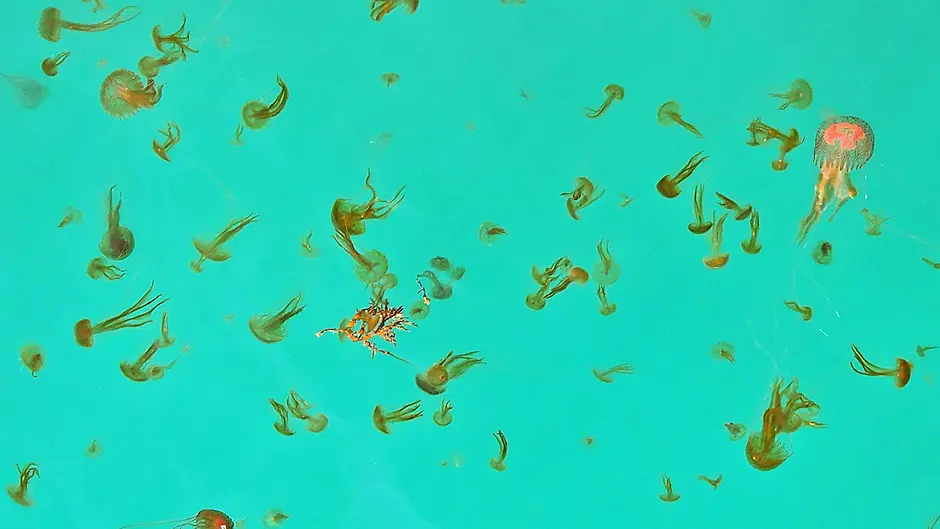THERE doesn’t seem to be any chance of wild swimmers getting back into Lough Hyne for the foreseeable future, following the arrival of tens of thousands of dangerous ‘mauve stinger’ jellyfish last week.
The lake – one of the few saltwater loughs in northern Europe, and the continent’s first marine reserve – made national headlines last week as one of several locations where the jellyfish swarmed in their thousands.
Visitors to several beaches along the Cork coastline have observed similar occurrences, many describing them as looking, from a distance, like large brown ‘oilslicks’ on the water.
Beaches at Inchydoney, Fountainstown and Crookhaven have all been affected, but locals have spotted them all along the coast as far as Co Waterford.
There were also large shoals of these jellies spotted at the inner harbour at Cape Clear, and between Sherkin and Cape Clear, this week.
These particular jellyfish, pelagia noctiluca, are not that common in Ireland but are believed to have been spotted in Lough Hyne in the 1930s and again in 2014 – but in very small numbers.
Visitors to the lough – which is one of the most studied marine habitats in the world – have been shocked by the sheer numbers of this jelly – which can cause a nasty ‘nettle-like’ sting from both its tentacles and body.
As the only entry and exit point for the lough is over rocky rapids, there are now fears that it could be quite some time before the jellyfish – which cannot move independently but are at the mercy of tides and currents – will be able to leave the protected body of water.
The lough is a research location for UCC’s marine biologists, who have a base there, and as these jellyfish are voracious eaters – described by one observer as the ‘cockroaches of the sea’ – there are genuine concerns for other marine life in the lake.
Some regular swimmers who have relocated to other locations along the coast, at Tragumna and Schull, have expressed surprise that there have not been any ‘no swimming’ notices posted at the lake.
Jellyfish stings can have serious outcomes for those with immune-compromising illnesses, as well as being a nasty event to contend with, even for very healthy swimmers.







